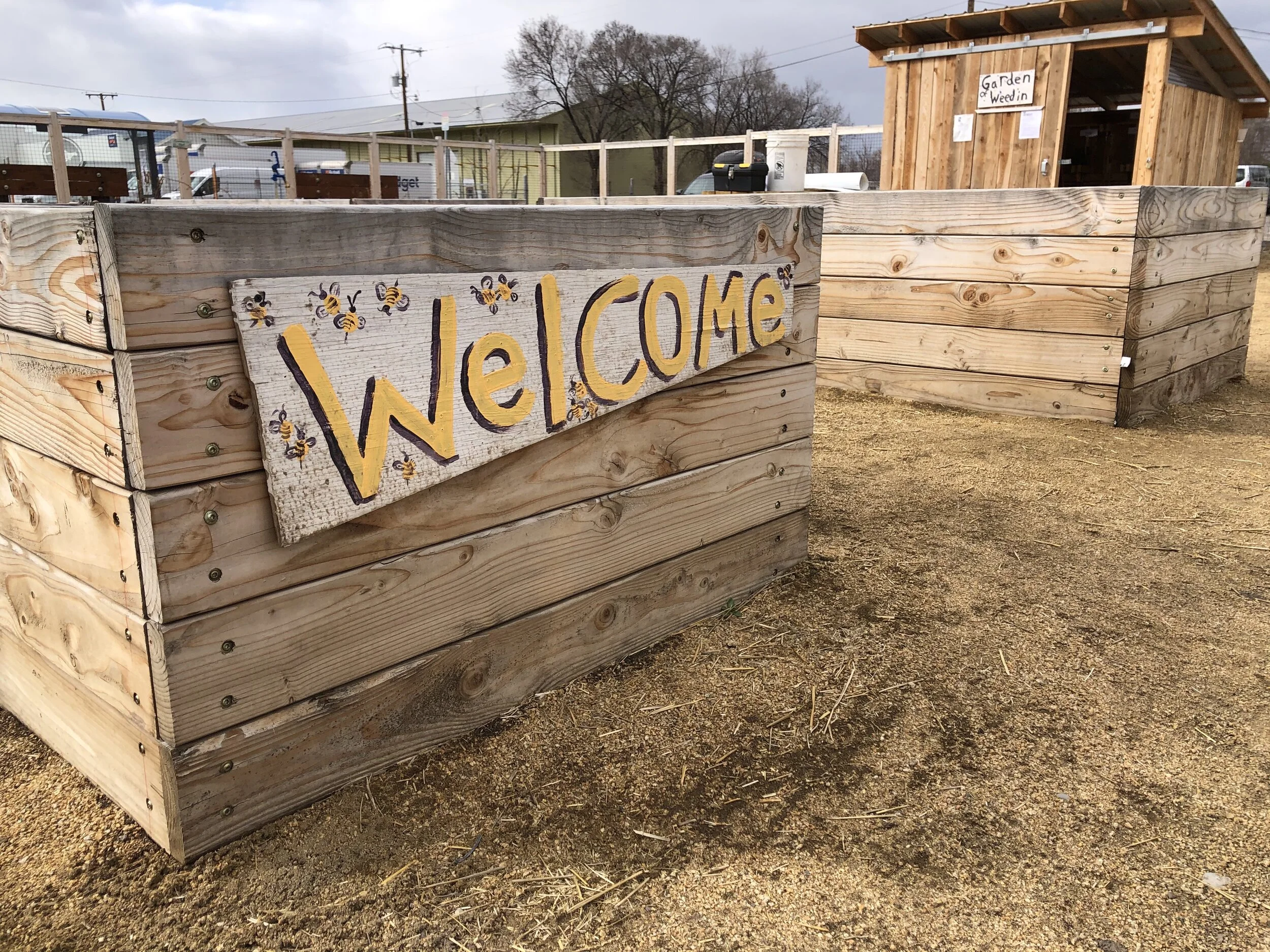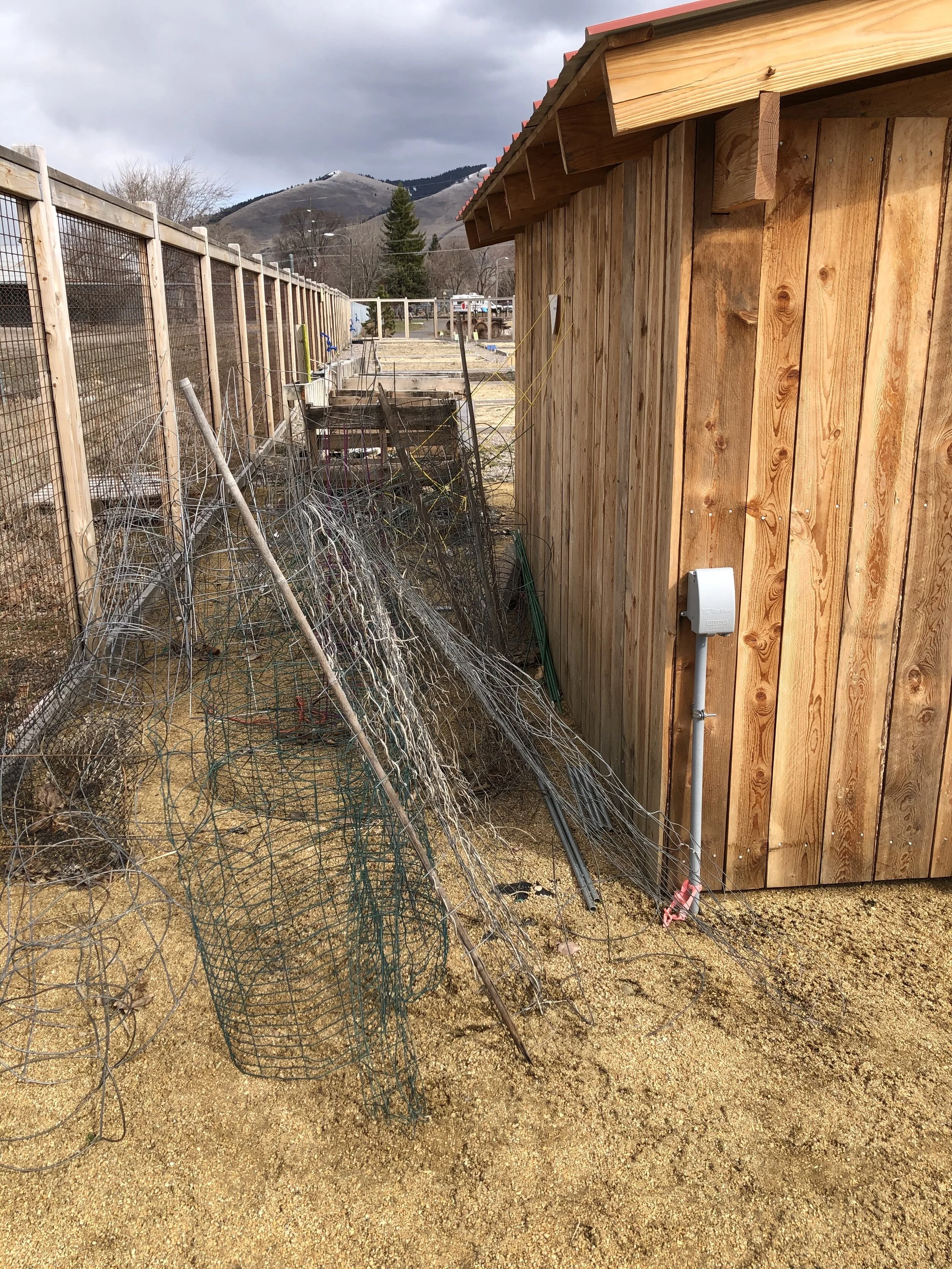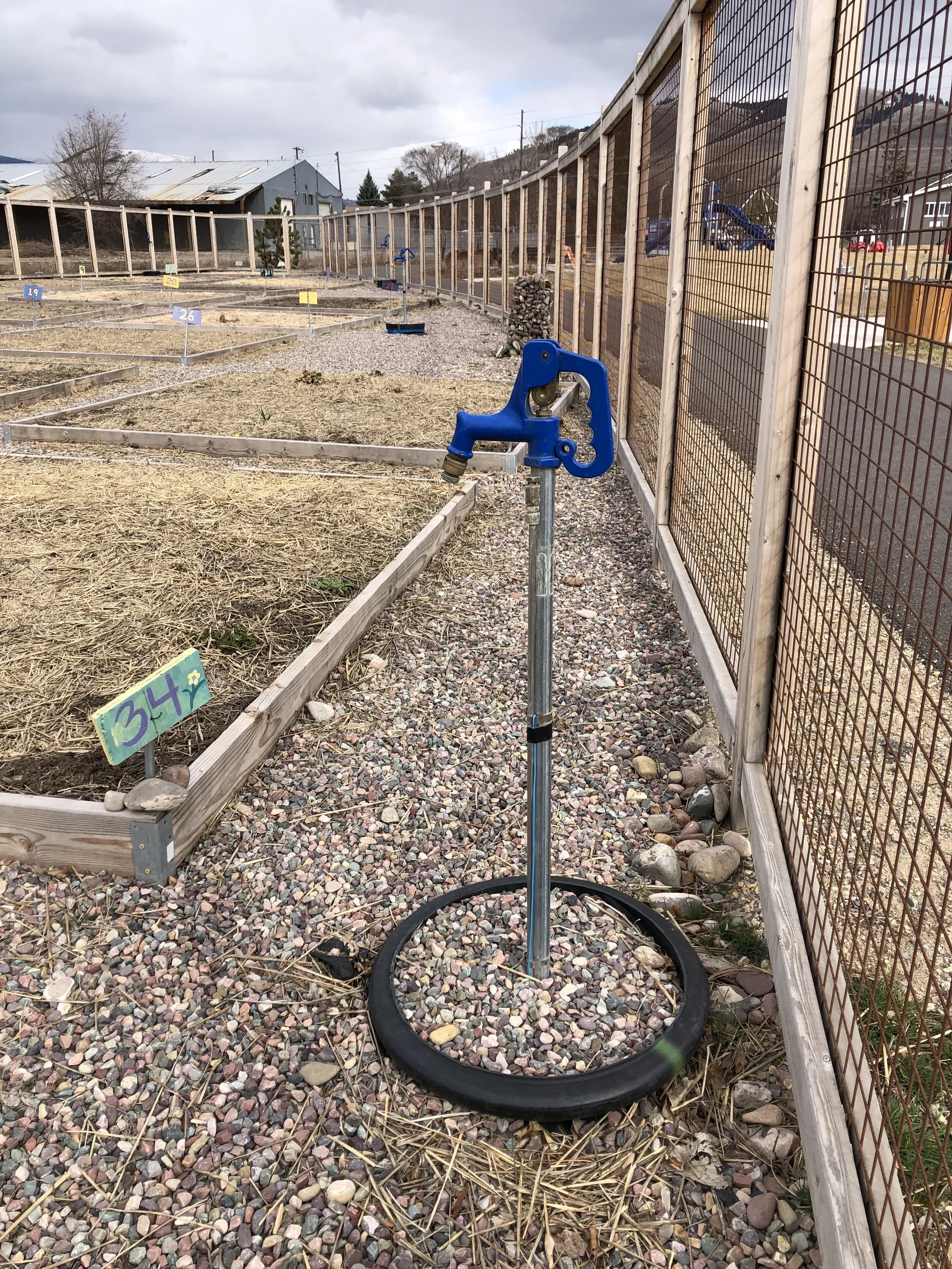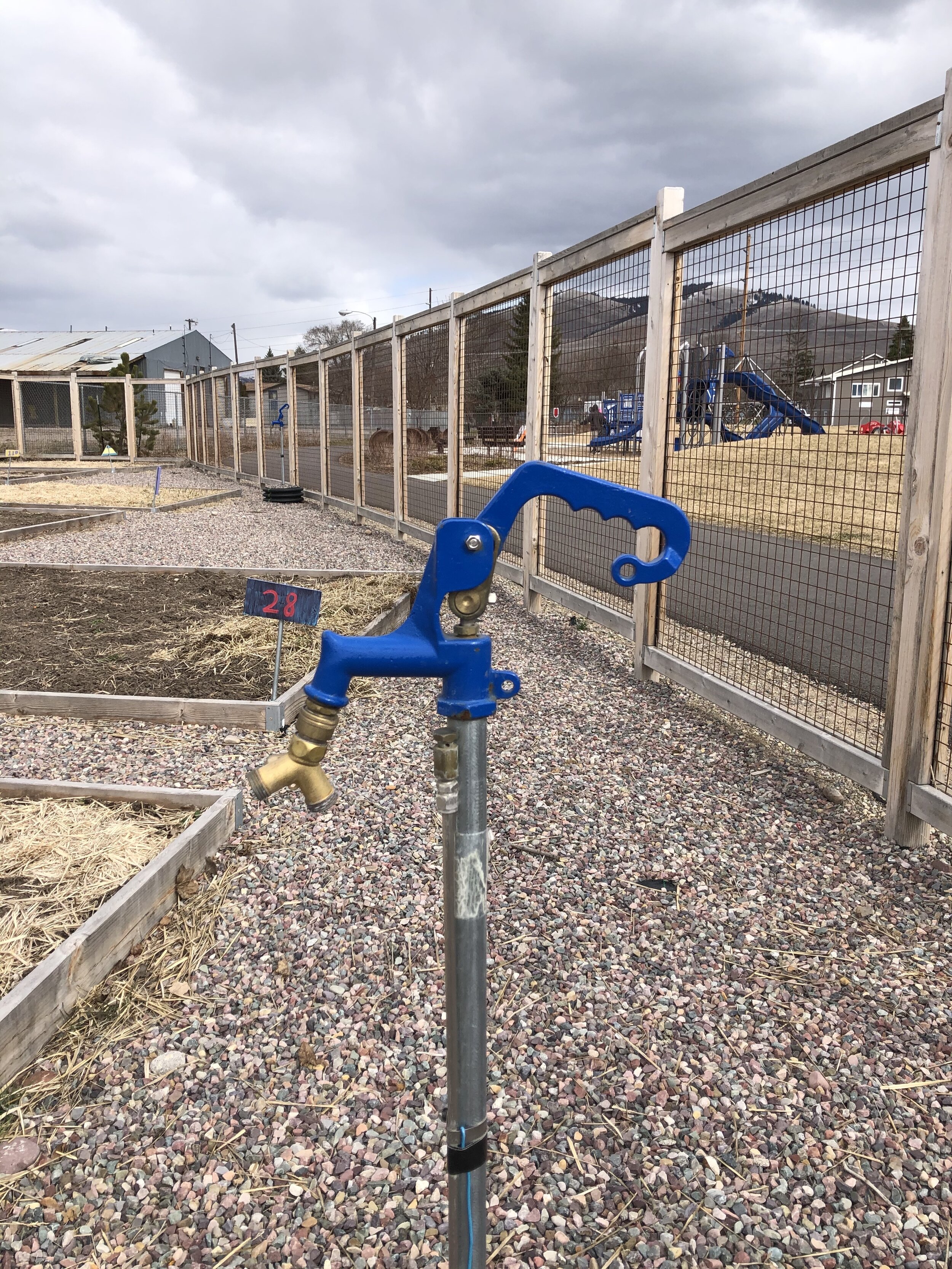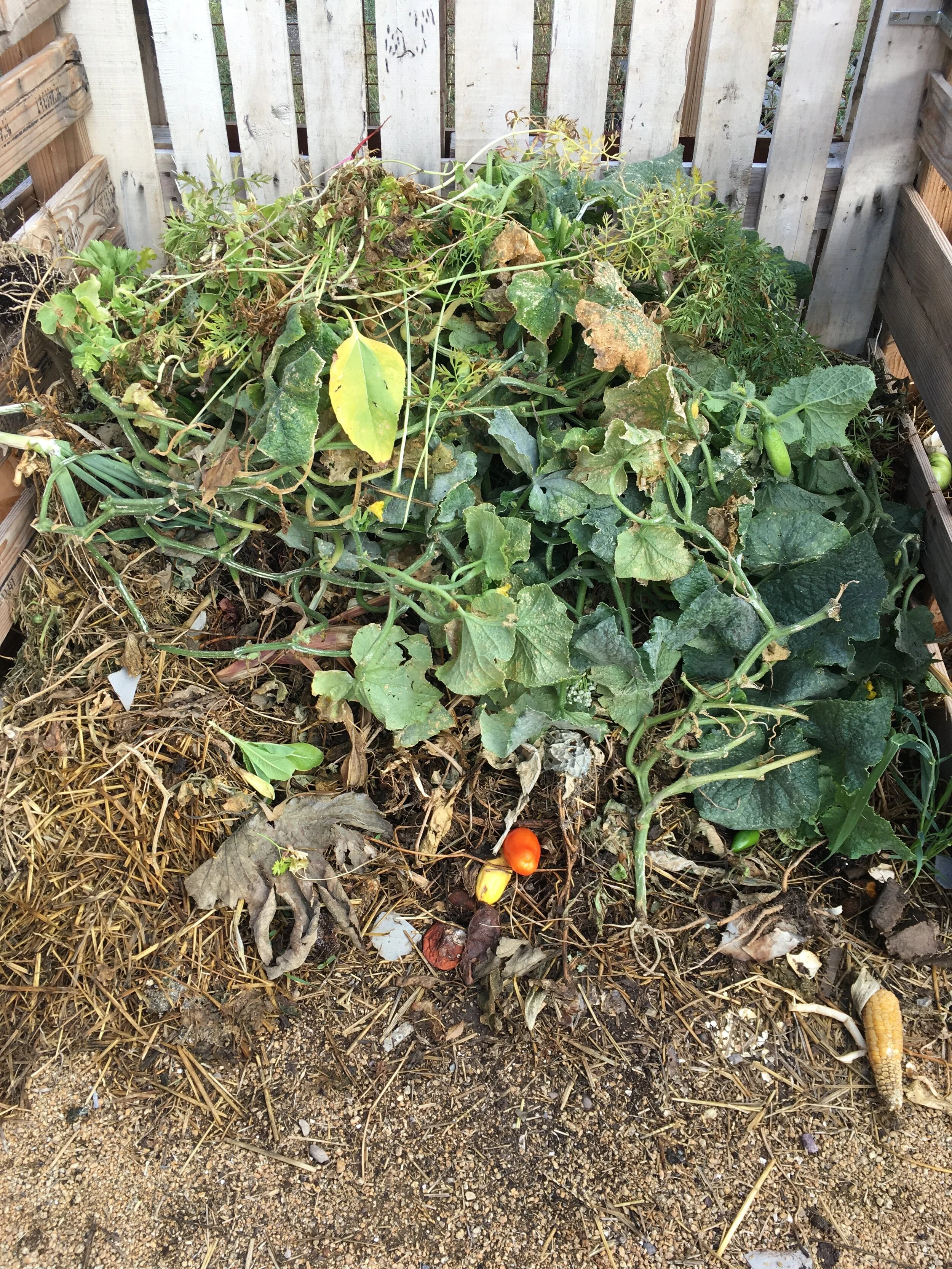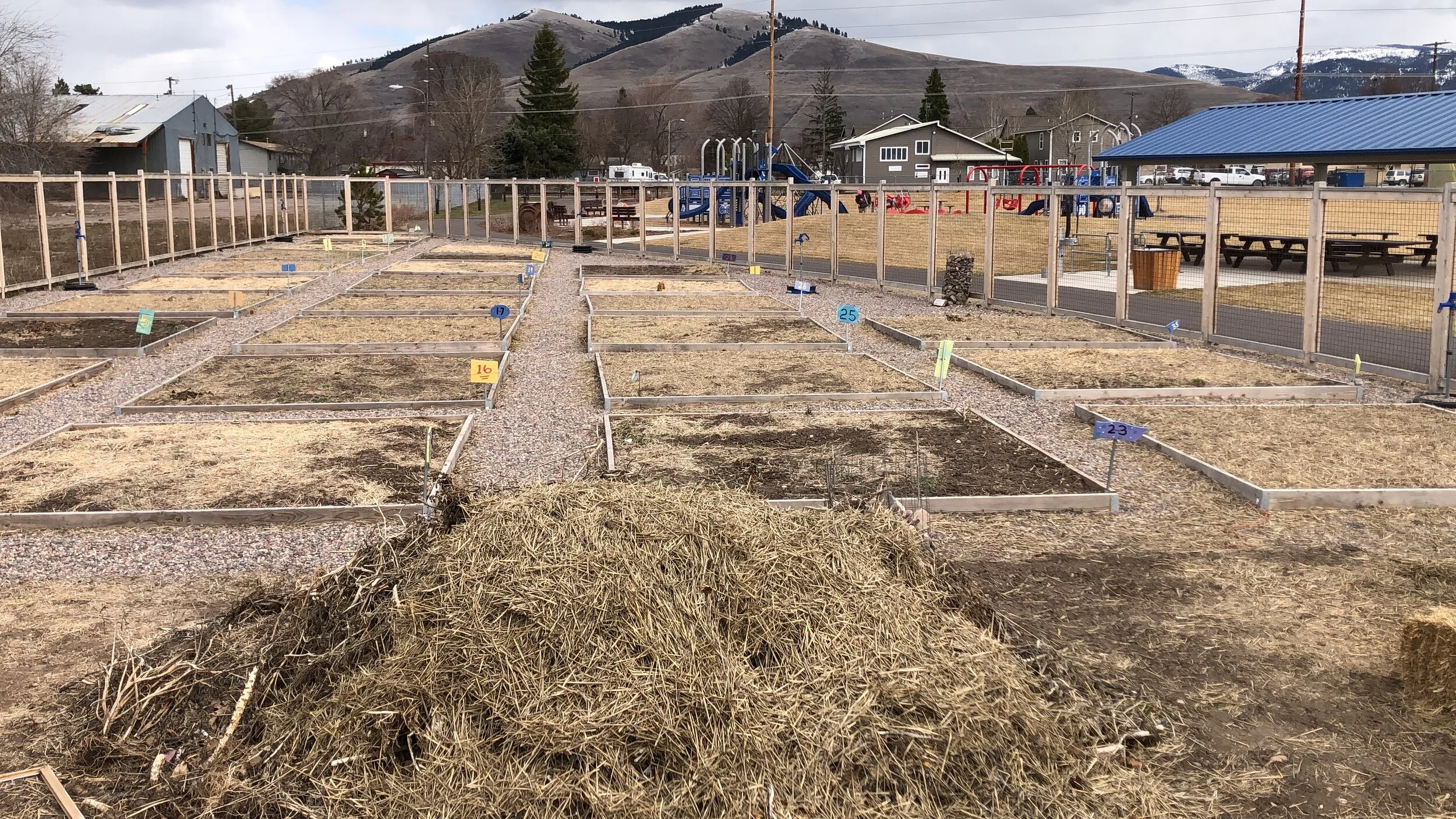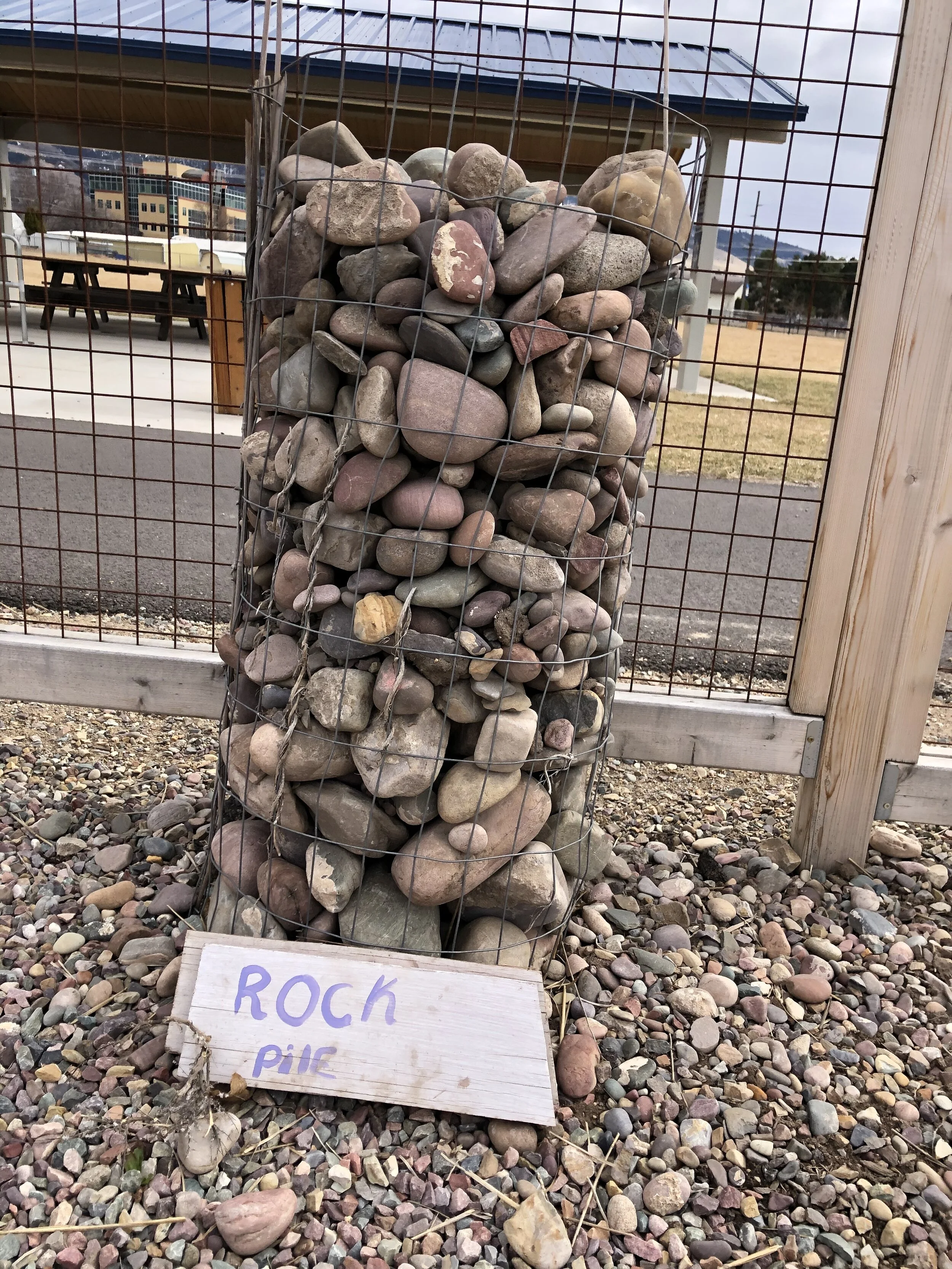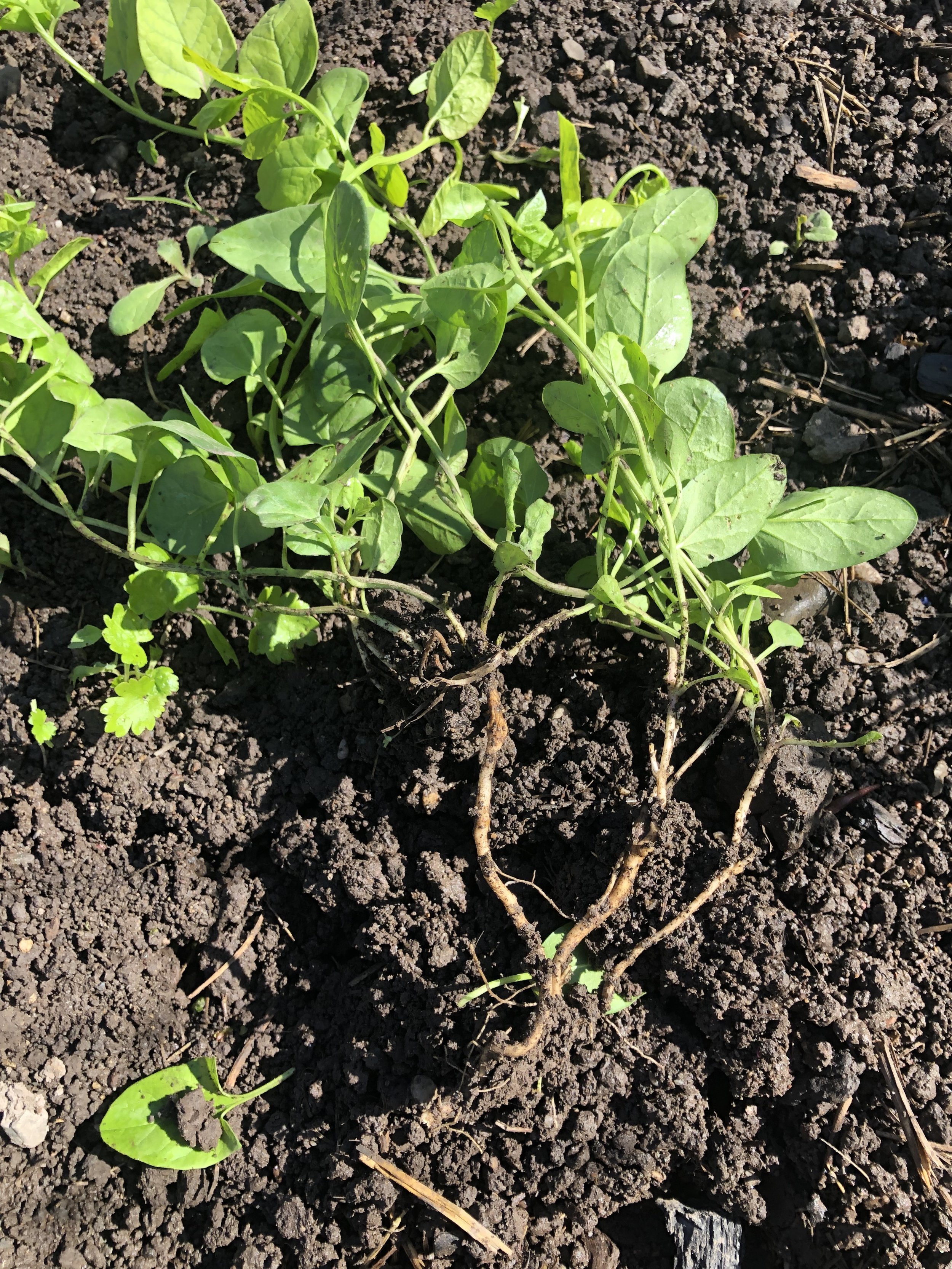Bitterroot Line Community Garden Orientation
Hello and welcome to the Bitterroot Line Community Garden at the Montana Rail Link Park!
Built in 2018, this garden is ready to establish deep roots in the Franklin to Fort Neighborhood. The rock pathways, wood-edged beds, 8 ADA-accessible raised beds, and overwhelming community and City support makes this garden special. (For more information on the other nine community gardens, click here.) Please read all of the important information below and watch the virtual video tour (link below), so you are familiar with your garden’s amenities and resources. We hope that with an understanding of all the pieces that make up this garden site, you will help us care for it and keep it functioning and thriving for the benefit of everyone.
Important Housekeeping Items:
Always lock the shed or gate and double check the lock when leaving the garden (spin the numbers and give it a little yank to make sure it is indeed locked).
Always close the gates when you leave to keep deer and dogs out.
Communicate with your garden neighbors! Here is the link to the private gardener Facebook group. This is a great way to communicate with fellow gardeners and stay up to date with other happenings or updates in the garden.
For issues or inquiries, contact the Community Garden Staff or the Bitterroot Line Garden Leadership Committee (contact info in the shed).
GARDEN SHED AND COMMUNAL TOOLS
Upon entering the garden, one of the first things you’ll notice is the garden shed. The shed’s combination is in the orientation email you just received. Inside the shed you’ll find communal garden tools, wheelbarrows, and hoses for your use at the garden. On the right side of the shed when you walk in is contact information for Garden City Harvest staff and your garden’s leadership committee (amazing fellow gardeners who volunteer their time to help you and Garden City Harvest staff!) A first aid kit, important safety information, and other documents will be inside here too.
Flyers about upcoming garden events or other important notices will be posted on a bulletin board or on the outside of the shed. Often, the leadership committee will write tasks that need done at the garden that can go towards your three service hours.
On the shelves inside the shed, you’ll find resources on gardening, a recipe card box to log your three service hours, and free seeds.
Remember, all gardeners are required to fill at least three hours helping to maintain the greater community garden and communal areas.
Behind the shed, you’ll find tomato cages and trellising material for your use.
hoses and watering
Bitterroot Line Garden has multiple blue-handled frost-free water spigots around the garden. Lift the handle up to turn on the water, and push it down to turn off. Caution: The water pressure and speed coming out of these spigots can blow you away, so lift up the handle very slowly. Spigots and garden hoses are communal and shared among all gardeners. When done with the hose, please coil it back on its hose hanger so it is not a tripping hazard. Also, release the water pressure in the hose by opening the hose nozzle after turning off the water at the spigot. This will help our hoses last longer because water that sits in a hose will expand in the heat and cause the hose material to break down faster.
Soil Amendments
Compost
TThis garden has a “house” compost system made out of pallets next to the shed. This is for vegetable scraps from your garden and kitchen. DO NOT ADD WEEDS, FIBROUS PLANT STALKS, ANIMAL PRODUCTS, PAPER PRODUCTS, TRASH OR COMMERCIAL-GRADE COMPOSTABLE ITEMS. These items will not break down in our simple bin system.
All inputs start at the farthest left bin and are turned (moved with a digging fork or shovel) to the next bin as they break down to make room for fresh scraps! The decomposed compost in the farthest right bin is good to use in your garden - help yourself! Keep in mind, this compost system doesn’t break down on its own. It requires time, water, and attention. If the compost starts to smell, it either doesn't have enough carbon (straw) or it needs to be turned (which gives it oxygen and reduces the smell). During the hot summer months, the compost needs to be watered frequently (every day or every other day.)
Manure
Garden City Harvest brings in composted manure every spring for community gardeners to help supplement their garden soil.
Each garden plot is allotted two 5-gallon buckets of manure each spring. Gardeners are also encouraged to build their own soil by bringing in other amendments as long as it does not contain chemicals or biosolids (treated sewage). Check out our Sustainable Growing Guidelines for more information.
Straw
Also note the stacked straw bales near the weed pile. These are for community gardener use as well. We recommend you use straw only for mulching garlic and overwintering crops. Unfortunately, due to rising prices of straw and diminishing local sources, Garden City Harvest cannot provide every gardener with straw and ask those who have the means to purchase your own straw in the fall. If you do use the straw we provide, please limit your use to 1/2 bale per plot. We also strongly encourage you to use leaves if you have them available as they are a great mulch for your overwintering soil. Straw can be found at Ace Hardware, Murdochs, CHS Mountain West Co-op, and local nurseries.
Please place used straw that you rake off your plot next to the compost bins to be mixed in with the vegetable scraps.
WEED PILE
Weeds must be separated from other garden waste and placed in designated weed pile. DO NOT put weeds in the house compost system! Stalky plants (i.e. sunflower, corn stalks, kale or brussels sprout stalks that take a long time to decompose) also go in the designated weed pile.
Please take the time to separate your house-compostable garden materials from the weeds and stalks, and absolutely no dumping of personal home yard or garden waste is allowed. Do not add straw, soil, potted plants, plastic, leaves or any other yard waste to the weed pile. The weed pile is manually removed by Garden City Harvest staff throughout the season and taken to the City compost facility, and these items make it extremely difficult to move. Garden City Compost may also reject the entire pile.
ROCK PILE
Our garden soil is full of rocks from glacial Lake Missoula. Please put all rocks that you pull out of your garden plot in the designated rock piles or rock cages like the image below. DO NOT THROW ROCKS IN THE PATHWAYS. Most importantly, it can be a tripping hazard, but there are plenty of small crushed rocks already there :)
This is the weed pile although the designated sign is buried. The used straw should also not be in this pile. Used straw should be placed next to the compost bin system to be later incorporated in with the vegetable scraps.
COMMUNAL AREAS
There are several other communal areas and resources in the garden that need your help. Many of these will benefit you and your garden. Additionally, the Bitterroot Line Garden is located on City and Parks land, so it is important to be respectful tenants and neighbors. Here’s a list of things that all community gardeners are collectively responsible for, so please do your part and chip in those three hours (or more)!
Tool shed: Help us keep it clean and tidy. Occasionally, it will need to be reorganized.
Trash: The rule is pack it in and pack it out, but inevitably trash ends up blowing around the garden. Spend a couple minutes helping us pick up trash around the garden site.
Weeding: The area around the picnic table, shed, ADA raised beds, and compost needs regular weeding. Gardeners are also responsible for weeding the pathways around their plot.
Community berry and flower patch: The main berry patch is located along the west fenceline, you’ll find some raspberries and perennial pollinator plants. Help us water and weed this plot, and in turn enjoy a handful of raspberries when ripe! There is also a communal hazelnut and smaller community bed with strawberries along the south fence line near plot #28.
Compost: When the compost gets stinky or full, move each pile to the right (See the Compost section above for more info).
Need more ideas? Contact your leadership committee - contact info in the shed!
Gardeners plant the community plot in 2019 at a garden work day organized by the leadership committee.
The community plot has raspberries to share. Please be mindful of others when picking and make sure there is enough for everyone to enjoy!
MOST WANTED WEEDS
Weeding is a fundamental part of gardening and should be done weekly. If you keep up with it using a hoop (hula) hoe, it should take no more than an hour a week to keep your plot clear of most weeds. If you choose to weed less often, the task will get exponentially more difficult, and you will be on your hands and knees digging out weeds. Keep your eyes out for notices about weeds throughout the growing season. Watch the video tutorials and look at the photos below for weeding tips, and if you have any questions about weeds, please ask!
While there are many garden weeds, keep a special eye out for quack grass and bindweed. These weeds should be placed in the weed pile, after you make sure to shake out any clumps of dirt.
Quackgrass
Quackgrass is grass with white, wire like roots and should be added to the weed pile. Use a digging fork to loosen the soil and make it easier to pull out the roots. Make sure you shake out any clumps of dirt.
The white, wiry roots of quackgrass
Bindweed
Bindweed is a perennial that is very sneaky. We want you to be able to ID it before it flowers and weed it out. It has arrow-shaped leaves, white flowers, and vines around anything nearby. Put bindweed in the weed pile.

